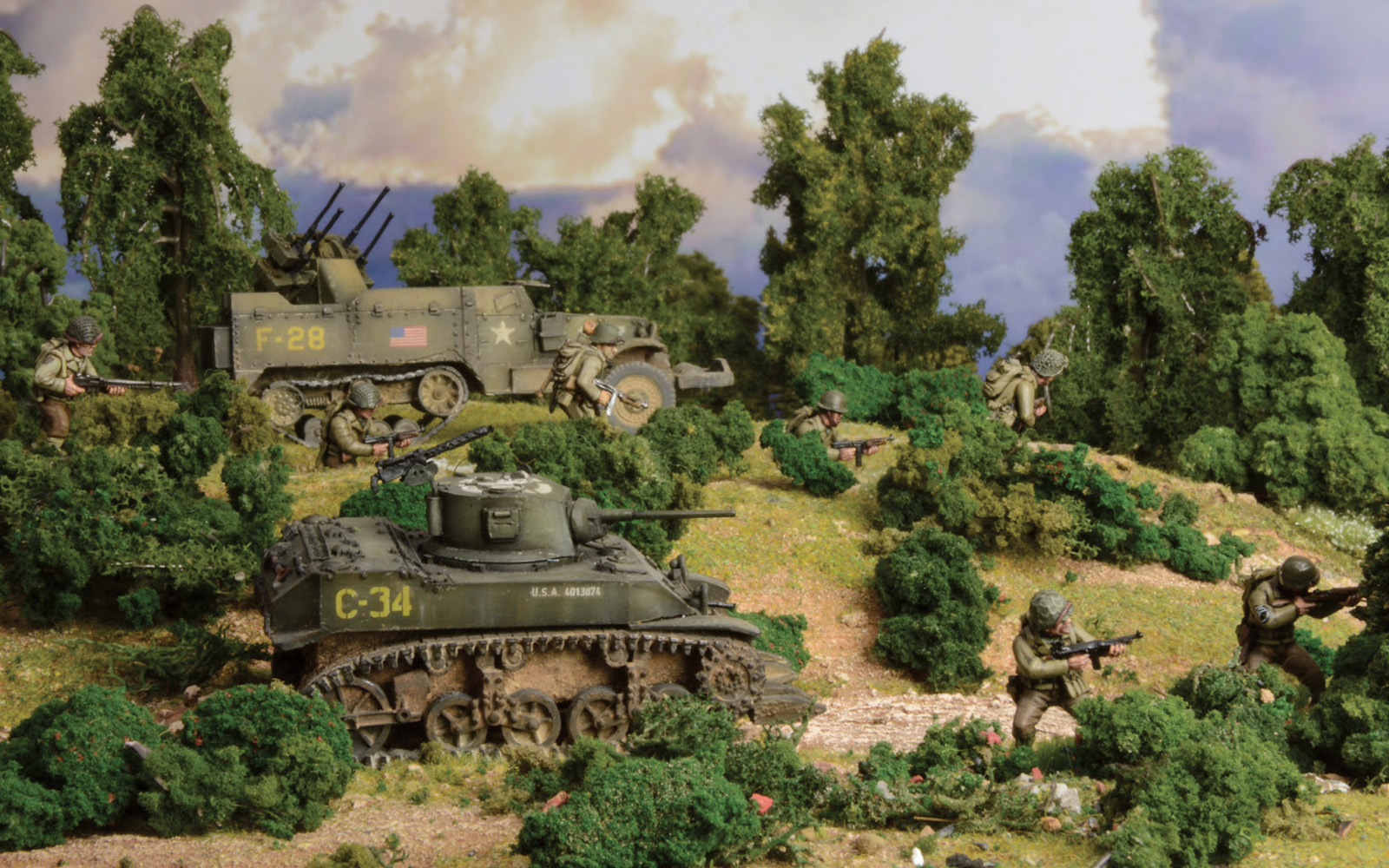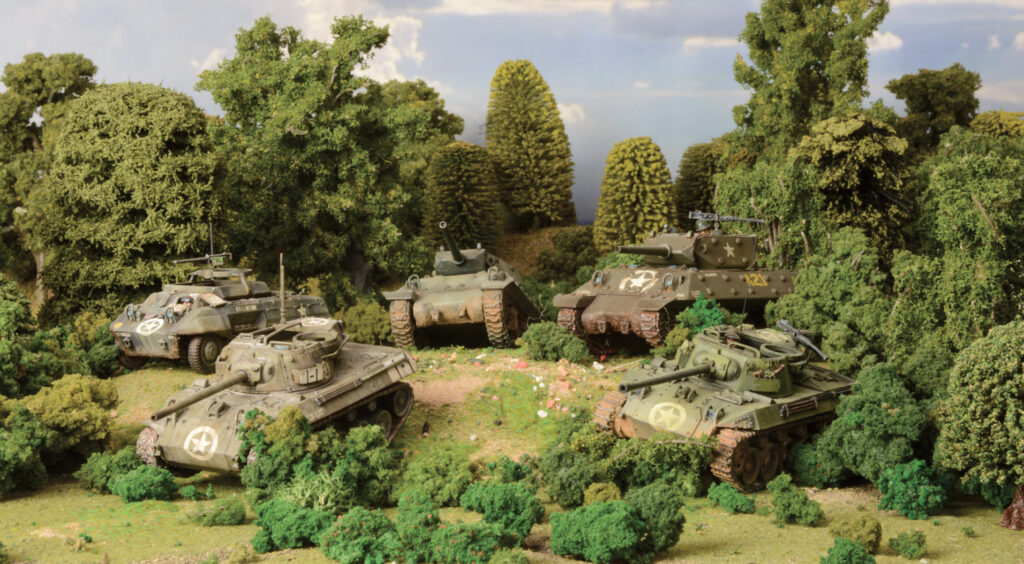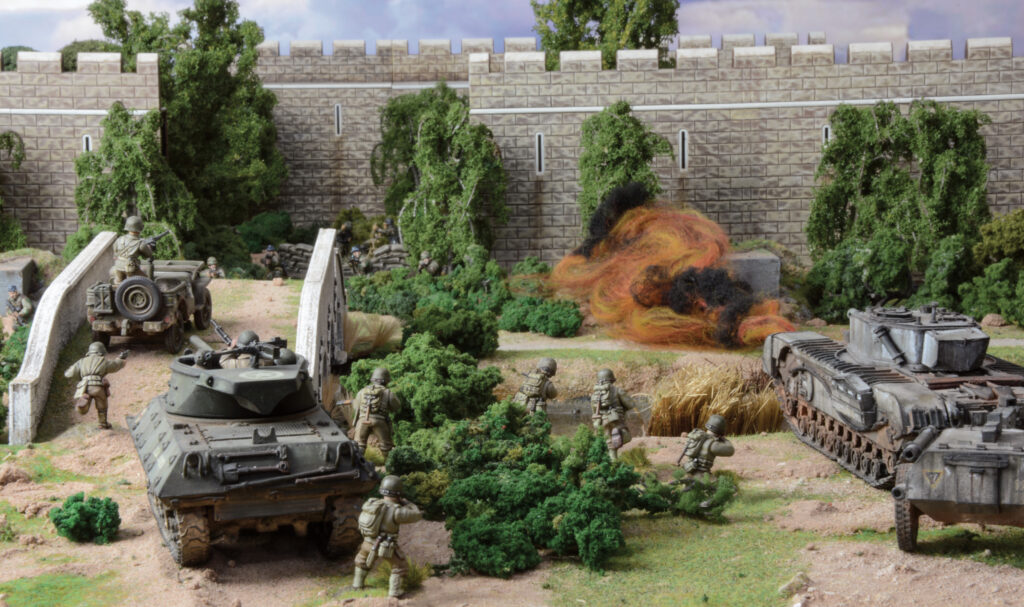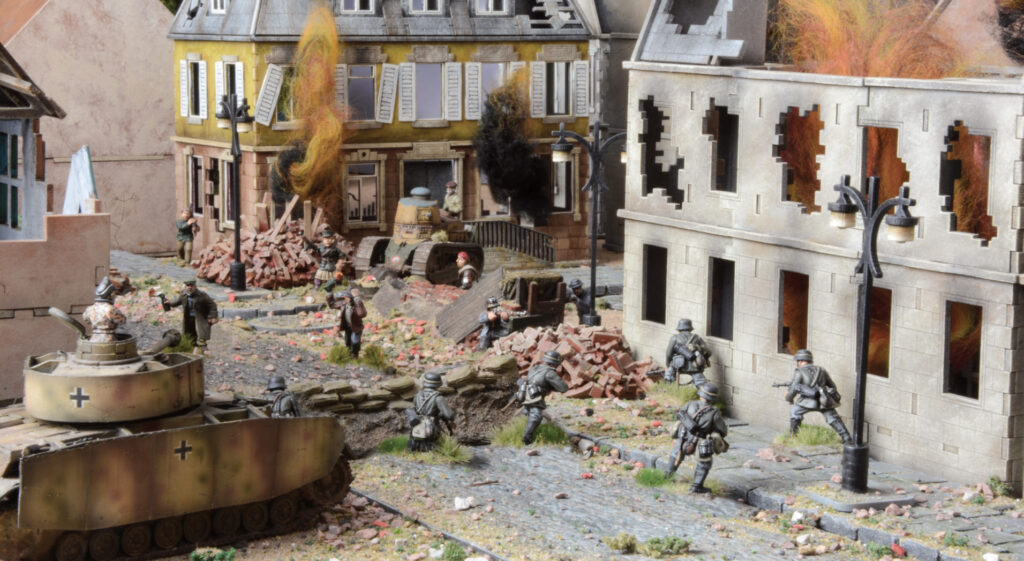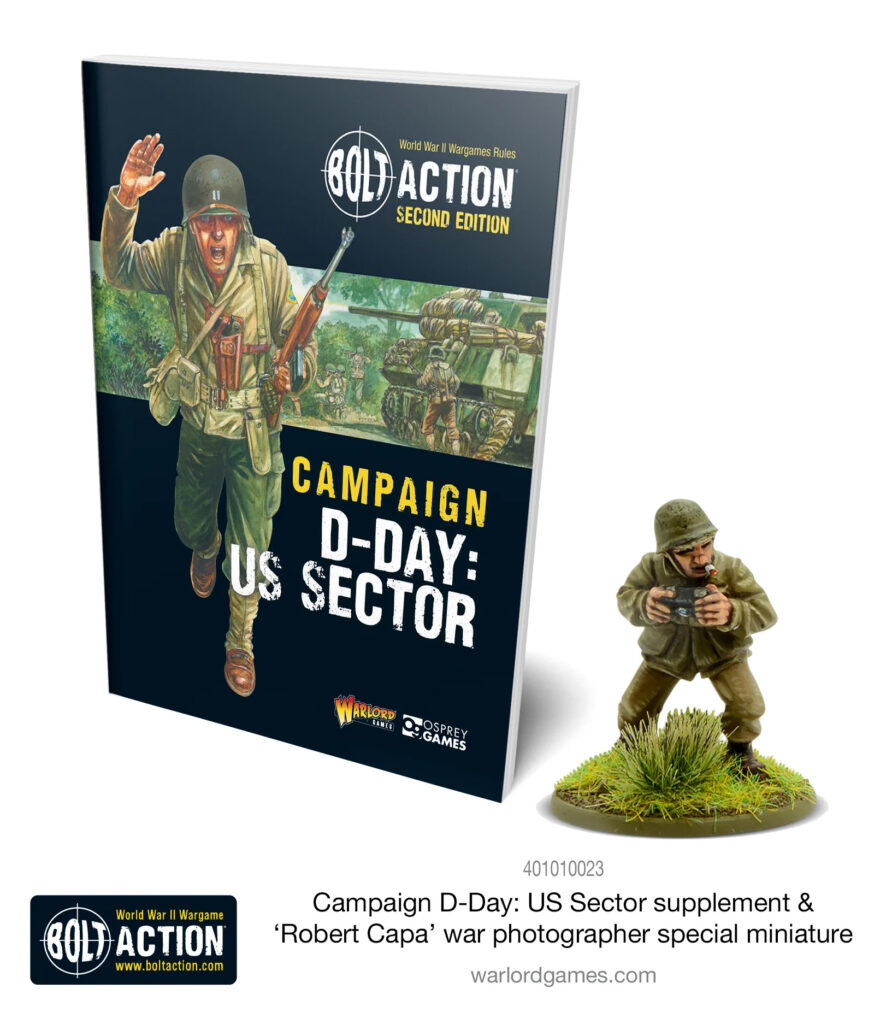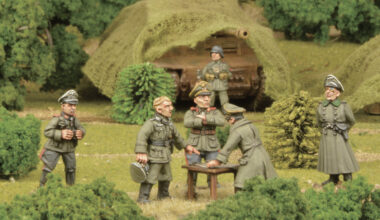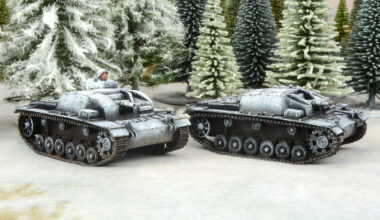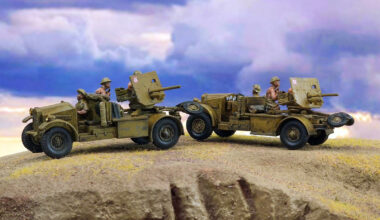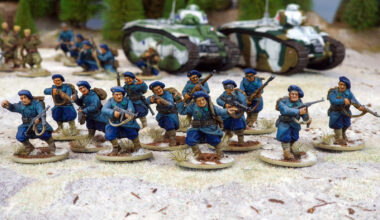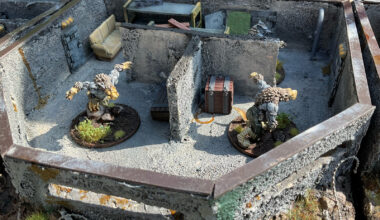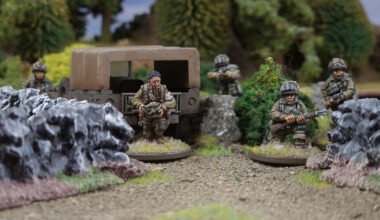After the historic D-Day landings came the monumental task of the liberation of France and the rest of occupied Europe. The D-Day: US Sector campaign supplement for Bolt Action is the third in our trilogy, focusing on the push inland from the US beaches of Omaha and Utah, including the fierce fighting for the strategically important port of Cherbourg on the Cotentin Peninsula, Operation Cobra, and the march westwards to wrest control of Brittany and Brest out of Axis control. As you’d expect from a Bolt Action campaign book, D-Day: US Sector gives you all the tools to give your Bolt Action battles a flavour of these battles, arming you with historical backgrounds, new units, rules and theatre selectors as well as a range of scenarios that present some of the more prominent historical engagements to refight through the medium of Bolt Action.
The Last Great Battle of the West
The plan for the Normandy invasion centred around an American landing on the west of the line of advance, and the British and Canadians landing to the east. Whilst the Anglo-Canadian forces pushed forward to capture the strategically essential city of Caen (the subject of Campaign D-Day: British & Canadian Sectors), the Americans were to capture vital ports essential to ensure a stable logistical chain, before turning eastward to establish a broad front to threaten Germany itself.
American forces landing at Utah and Omaha beaches suffered significant casualties but, despite the hurdle of crossing long, open beaches with fierce networks of defensive installations, they managed to secure the beaches. A major problem now facing US VII Corps was the German 6th Fallschirmjäger regiment at Carentan, which were preventing an effective link-up of the forces at Utah and Omaha beaches. The bocage country south of the landing areas was also a significant hurdle to overcome, as it was perfect ground to mount an effective defence, especially against American armour. The vital deep-water ports in Normandy needed to be captured intact to maintain an effective logistical chain across the English Channel. With D-Day over, the attacking American soldiers now had a series of even greater challenges ahead.
Scenarios
Within, there are twelve scenarios to test your tactical mettle. Not only do they cover the heroic actions of US forces such as the 101st Airborne and the 2nd Armoured Division but the daring raids of the British SAS against German supply and communication lines, and the efforts of the French resistance thanks to the encouragement spurned by the encroaching Allied forces as they lumbered towards occupied Paris.
Of note is the final scenario, The Assault of Fort Montbarey, which details a spectacular assault on a German fort held by 200 men of the elite Fallschirmjäger by the 121st Engineer Combat Battalion, supported by British flame-throwing Churchill crocodiles.
- Scenario 1: The Battle of Graignes
- Scenario 2: Purple Heart Lane
- Scenario 3: Bloody Gulch
- Scenario 4: ‘Lightning Joe’ and Cherbourg
- Scenario 5: Battle of the Hedgerows
- Scenario 6: Capital of Ruins
- Scenario 7: Battle of Sèves Island
- Scenario 8: Operation Lüttich
- Scenario 9: Brewing Up
- Scenario 10: Operation Wallace
- Scenario 11: Liberation!
- Scenario 12: Brest – The Assault of Fort Montbarey
Additional Rules & Units
To best represent the forces on both sides covered by the campaign, the book provides plenty of new units, new theatre selectors, and even complete army lists in some instances. For the Allies, US Army Rangers get their own list, representing their composition between 1942-45 (and especially handy now that they have their very own all-plastic kit), replete with their Rangers Lead the Way! special rule for all infantry units in the army, and the option for them to be led by famous personalities, like Lieutenant Colonel William Darby, rendering the army list equally useful for campaigns set in North Africa and Italy. The options for US Airborne forces are also greatly expanded, and not to let the United States take up all the glory in their own Sector, British SAS forces also receive their own Army List, pertinent to the theatre, presenting the challenge of an elite infantry force that doesn’t bring anything heavier than a jeep to the table.
On the side of the Axis, Both Fallschirmjäger and Waffen-SS forces will find a boost with a smattering of new units and theatre selections each, whilst French Partisans also get a look in with thematic options such as Jedburgh Teams, Maquis Squads and Parisian Police, ideal for the Liberation scenario.
Your battles can be made even more immersive by the use of optional special rules, which explore the mechanics of fighting in Bocage terrain, close-quarters city fighting, and the deployment of minefields and fortifications to name but a few.
Order Your Copy Today
Order D-Day: US Sector from the Warlord Games webstore and you’ll also receive a free special edition figure – Robert Capa, war photographer.
Robert Capa was a Hungarian-American war photographer, widely considered one of the all-time greatest in history. Over the course of his life, he risked life and limb numerous times, producing illustrative documentation of WWII in London, North Africa. On 6th June 1944, he was the only civilian photographer to have landed on Omaha Beach alongside armed forces, attached to the 16th Infantry Regiment of the 1st Infantry Division. During this operation, he produced a group of images that came to be known as “The Magnificent Eleven”. For his work in documenting WWII in pictures, he would be awarded the Medal of Freedom by U.S. General Dwight D. Eisenhower. H
